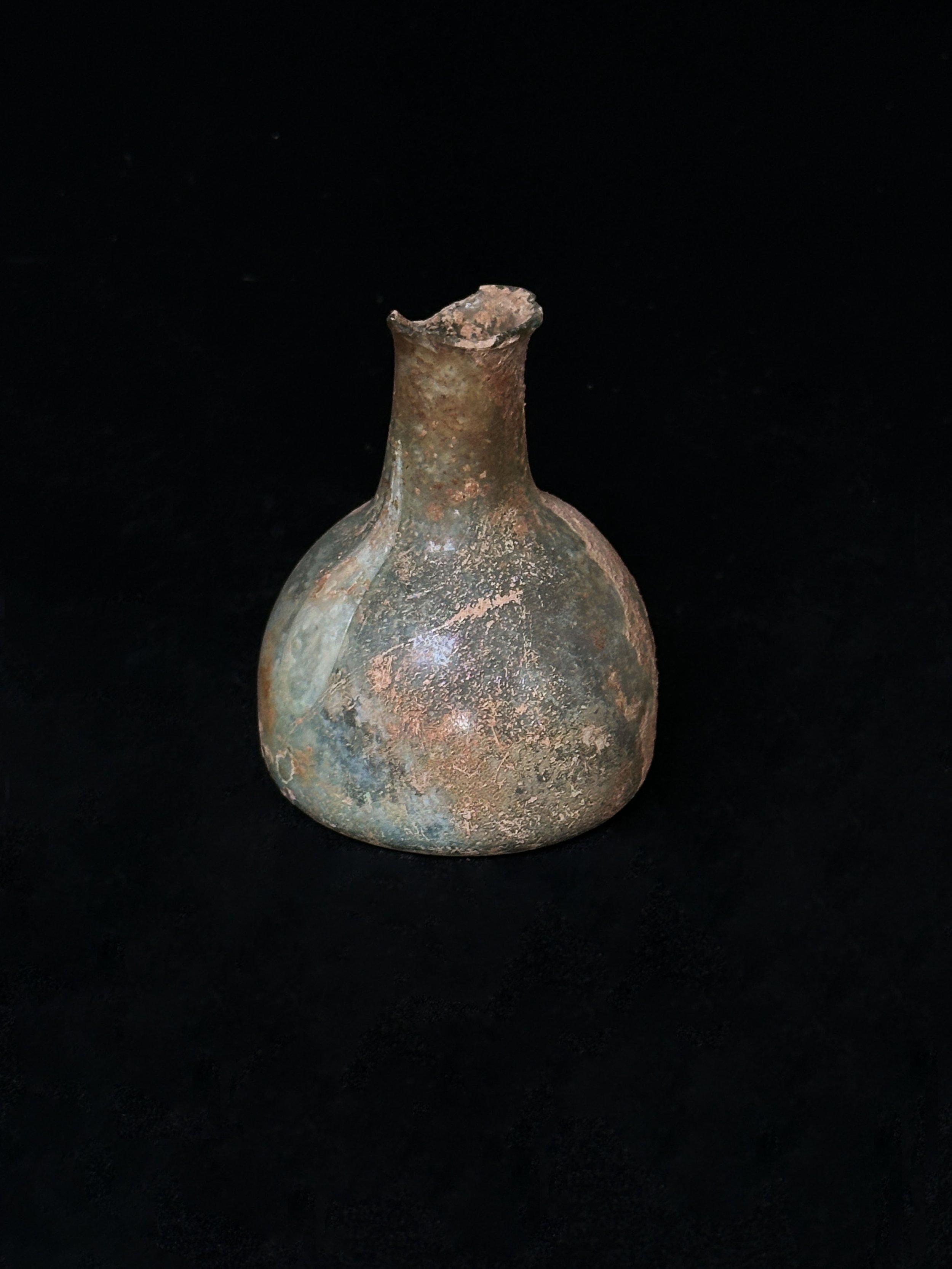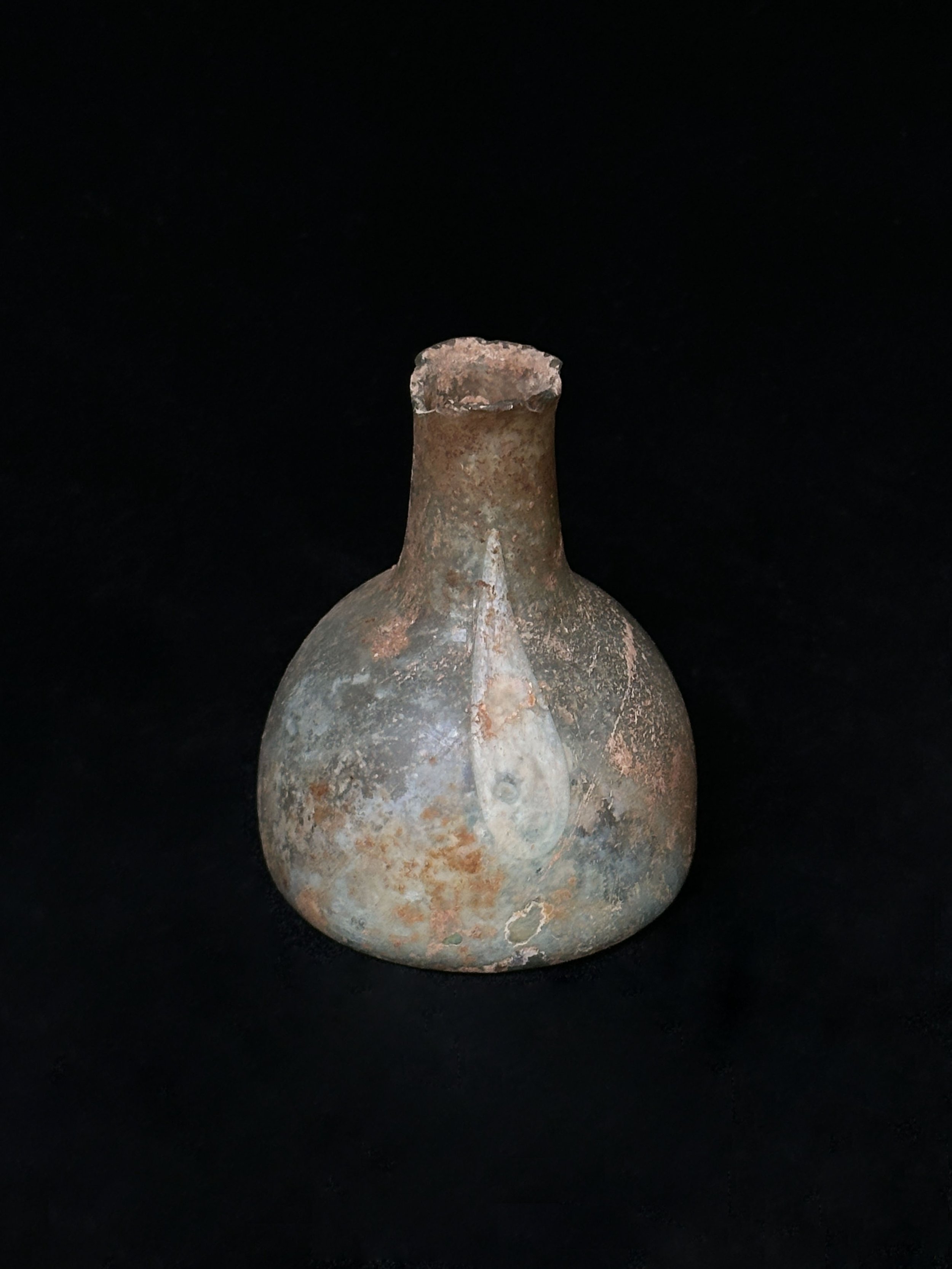 Image 1 of 5
Image 1 of 5

 Image 2 of 5
Image 2 of 5

 Image 3 of 5
Image 3 of 5

 Image 4 of 5
Image 4 of 5

 Image 5 of 5
Image 5 of 5

UNEARTHED Roman Glass Vessel with Applied Trail
1st–3rd Century CE
A vessel shaped by breath, then marked by hand—this Roman glass form features a single, molten trail applied to its rounded body, a gesture frozen in time. It may once have held oil or sacred liquids, now emptied and transformed by the passing centuries.
Its form is asymmetrical, its rim softened by age. Yet it remains whole in its presence: an object of offering, devotion, and quiet memory.
Free-blown and trail-applied glass
Unearthed in the Eastern Mediterranean
Approx. 7×6cm / 3×2.5”
Note: Rim is worn and partially missing, typical of ancient glass. This does not compromise its integrity, only deepens its story.
1st–3rd Century CE
A vessel shaped by breath, then marked by hand—this Roman glass form features a single, molten trail applied to its rounded body, a gesture frozen in time. It may once have held oil or sacred liquids, now emptied and transformed by the passing centuries.
Its form is asymmetrical, its rim softened by age. Yet it remains whole in its presence: an object of offering, devotion, and quiet memory.
Free-blown and trail-applied glass
Unearthed in the Eastern Mediterranean
Approx. 7×6cm / 3×2.5”
Note: Rim is worn and partially missing, typical of ancient glass. This does not compromise its integrity, only deepens its story.
1st–3rd Century CE
A vessel shaped by breath, then marked by hand—this Roman glass form features a single, molten trail applied to its rounded body, a gesture frozen in time. It may once have held oil or sacred liquids, now emptied and transformed by the passing centuries.
Its form is asymmetrical, its rim softened by age. Yet it remains whole in its presence: an object of offering, devotion, and quiet memory.
Free-blown and trail-applied glass
Unearthed in the Eastern Mediterranean
Approx. 7×6cm / 3×2.5”
Note: Rim is worn and partially missing, typical of ancient glass. This does not compromise its integrity, only deepens its story.

